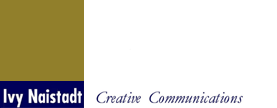Recently, I’ve had the pleasure of coaching a speaker for a TEDx presentation.
I now often hear people referring to TED talks when I work with people in companies. It’s become a common reference point for the overall quality of a presentation. While the aspirational goal of delivering a great talk is positive, it’s important to remember a few things.
Most business presentations are not designed the same way. TED presenters must adhere to a strict time frame, weave a complex and beautifully crafted narrative while driving one idea home that will ‘change the world’.
However, there are a few key principles you can adapt and give a TED-like talk, upping your own presentation game.
1. Craft a clear and concise message.
Ted talks are based on one idea that will impact or make a difference in the world. You are either seeking to change perceptions; getting people to think differently about something or, you’re moving people take an action.
Amy Cuddy’s TED Talk, “Your Body Language Shapes Who You Are” is a perfect example. Her original research into how you can change other people’s perceptions of you and how you feel about yourself through posture has convinced millions of people to strike the infamous “Power Pose”.
In Monica Lewinsky’s courageous talk titled, “The Price of Shame” she seeks to put an end to cyberbullying while reclaiming her personal narrative.
The premise of your talk is the concept or idea that the whole talk hangs on. If you don’t know what it is, you can’t be very convincing. In day-to-day business presentations, many presenters flounder because they aren’t clear about what they’re trying to accomplish from the start.
Everything you include in your presentation flows from your one clear Premise or Objective. If it doesn’t support your overall objective, eliminate it.
2. Cultivate a natural, conversational delivery style.
Due to the TED and TEDx talks garnering over a billion views and still going, we’re all getting used to a natural, easy delivery style. The most captivating presenters are speaking with their audiences as though they are having a conversation with good friends.
However, there’s a caveat.
These presenters are rehearsed. A lot... over a substantial period of time. To ensure the high quality we’ve come to associate with TED, professional speaking coaches often work with presenters so when they hit the stage, although they might be nervous, they’ve had ample time in front of discerning listeners.
Ted talks are often memorized. Business presentations usually are not and don’t need to be memorized. However, I strongly suggest knowing your opening, close and transitions. The first 30 seconds are critical in any talk.
As a strong advocate for rehearsal with my clients, I realize everyone is extremely busy and realistically may not have a lot of discretionary time on hand. In that case, you wouldn’t give that TED talk. It requires commitment and time.
But if you’re heading into an important company presentation or delivering your expertise at a conference, rehearsal is a key to how comfortable you’re going to feel leading up to and on the day of the event.
It’s hard to be natural when you’re still thinking about what comes next.
My rule of thumb is to rehearse as much as you need to feel natural. No one has to know but you.
3. Stories, stories, stories. Become a good storyteller.
Ted talks include a combination of anecdotal and data-driven support for your main ideas, which satisfies both right and left-brain processing.
We make decisions with both our head and heart. Stories tap into our heart and provide the powerful emotional element.
Business presentations need to do the same thing. While you might not be able to take people on a long narrative journey, you can benefit from one good well-placed story within your talk.
The more opportunities you create for yourself to test these principals in various speaking situations, the more proficient you will become. You will see the difference not only in how your audience responds to you and your ideas, but in your own enjoyment of the whole experience.
Copyright © 2015 by Ivy Naistadt - All rights reserved

